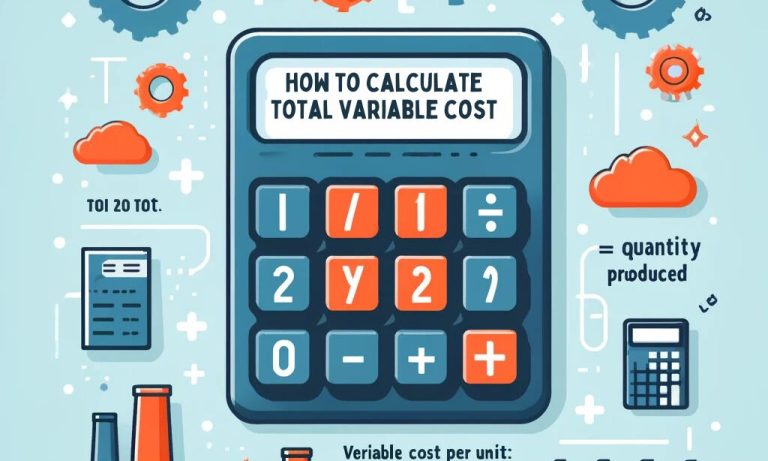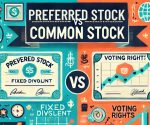Understanding how to calculate total variable cost, or TVC, is important for businesses in their general and specific cost structures. Total variable costs are those costs that vary in proportion to the level of production or sales volume. Variable costs increase with an increase in production, and they fall with a decrease in production. Accurate estimation of this cost will enable businesses to analyze their profitability, determine pricing strategies, know how best to run their operation and make resource allocation decisions.
What is Total Variable Cost?
Variable costs are expenses that vary about the level of production or sales that a particular company goes through. While fixed costs do not change with output, variable costs vary directly with the output’s volume. Among the defining features of variable cost are:
- Directly proportional to output: The more units you produce, the higher the variable costs.
- Examples include raw materials, labor, and utilities: These are all costs that increase as production increases and decrease when production decreases.
The total variable cost enables the business to have a clear understanding of the expenses that will increase with more production. This includes the increase in raw material costs or labor costs that rise more with more production. A high total variable cost may indicate that the production process is more costly, which could be very important in terms of operational decisions.
How to Calculate Total Variable Cost
Calculating the total variable cost is very important in business as a result of controlling and tracking costs in business. The formula for TVC is a pretty simple-to-use approach: multiply the variable cost per unit by the number of units produced. Here’s how it works:
Formula:
TVC = Variable Cost per Unit × Number of Units Produced
Steps to Calculate TVC:
- Variable Cost per Unit: This is the cost of a unit by the contribution added while producing one extra unit. It will cover raw materials, labor costs, and any other cost that varies directly with production.
- Determine the Number of Units Produced: This is the total number of products produced over a given time, such as a day, week, month, or year.
- Multiply the Two: You can multiply these two to find the total variable cost after knowing the production of variable cost per unit.
Total variable cost calculation helps a firm know how the variable expenses are at different levels of production. It also enables one to know what future costs could be in scaling up operations.
Example of Total Variable Cost Calculation
Let’s walk through a practical example to further clarify how to calculate total variable cost. Imagine a company that produces widgets. The company’s variable costs include raw materials, packaging, and direct labor, all of which vary based on the number of units produced. For this example, let’s assume the following costs:
- Raw materials: $2 per unit
- Labor costs: $1.50 per unit
- Packaging: $0.50 per unit
The total variable cost per unit is the sum of these costs:
Total Variable Cost per Unit = $2 + $1.50 + $0.50 = $4 per unit
Now, if the company plans to produce 2000 widgets in a given month, the total variable cost would be:
TVC = $4 × 2000 = $8000
Therefore, the total variable cost for producing 2000 widgets is $8000. If the company decides to increase production to 3000 units, the total variable cost will increase proportionally.
TVC = $4 × 3000 = $12,000
This example shows how variable costs change with production levels, providing businesses with insights into how scaling up or down will impact costs.
Why is Total Variable Cost Important?
Total variable cost is essential for a business since it directly affects the cost structure and profitability. By knowing the total variable cost, companies can make better-informed decisions regarding production, pricing, and resource allocation. Here’s why:
- Pricing Strategy: To determine selling prices that guarantee profitability, a business has to know its total variable cost.
- Profitability Analysis: Knowing the total variable cost, the business will be able to analyze the profit on each unit after it absorbs all the variable costs. It will know its contribution margin and overall profitability.
- Cost Control: Through controlling variable costs, companies are able to identify where cost-cutting can be made. Say labor or raw materials increase in price. Then companies can modify the method of production in some aspect, or negotiate a better price with suppliers.
- Budgeting and Forecasting: Knowing how total variable cost behaves as factors of production change is important for budgeting and financial forecasting. This enables companies to predict future costs and expand/contract appropriately.
- Break-even Analysis: Total variable cost is an important function for break-even analysis. With this, businesses can be able to know how many units they have to sell before the fixed and variable costs are recuperated.
Without a clear understanding of total variable costs, a company may find itself in financial trouble despite high sales, especially if the variable costs eat into the profits.
Total Variable Cost vs. Average Variable Cost
Understanding the difference between total variable cost and average variable cost is essential for analyzing a company’s cost structure and profitability. Here’s how they differ:
- Total Variable Cost (TVC): Total variable cost refers to the entire cost that varies with production levels. It represents the total expense incurred by the company for producing a given number of units, as calculated earlier. As production increases, TVC rises.
- Average Variable Cost (AVC): Average variable cost refers to the per-unit variable cost. It is calculated by dividing the total variable cost by the number of units produced. The formula for average variable cost is: AVC = TVC / Quantity of Units Produced
While total variable cost gives you the total variable expenses, average variable cost helps you determine the cost of producing goods per unit. The key here is that TVC provides a total, while AVC provides costs on a per-unit basis. For instance:
- If the total variable cost of producing 1000 units is $5000, the average variable cost is: AVC = $5000 / 1000 = $5 per unit
Both TVC and AVC are essential for assessing a company’s cost structure and profitability, but AVC gives businesses a clearer understanding of cost efficiency on a per-unit basis.
How to Calculate Total Variable Cost FAQs
What is the difference between fixed cost and variable cost?
Fixed costs remain constant regardless of production levels, while variable costs change based on production. For example, rent is a fixed cost, and raw materials are a variable cost.
Can total variable cost decrease?
Yes, total variable cost can decrease if the level of production decreases. As fewer units are produced, fewer variable inputs like raw materials and labor are needed, reducing total variable costs.
How do you calculate average variable cost?
Average variable cost is calculated by dividing total variable cost by the number of units produced. The formula is: AVC = TVC / Quantity of Units Produced.
What is an example of a variable cost?
An example of a variable cost is the cost of raw materials. As production increases, more raw materials are required, raising the variable costs.
Why is understanding total variable cost important for business?
Understanding total variable cost helps businesses set pricing strategies, perform break-even analysis, control costs, and determine profitability.


